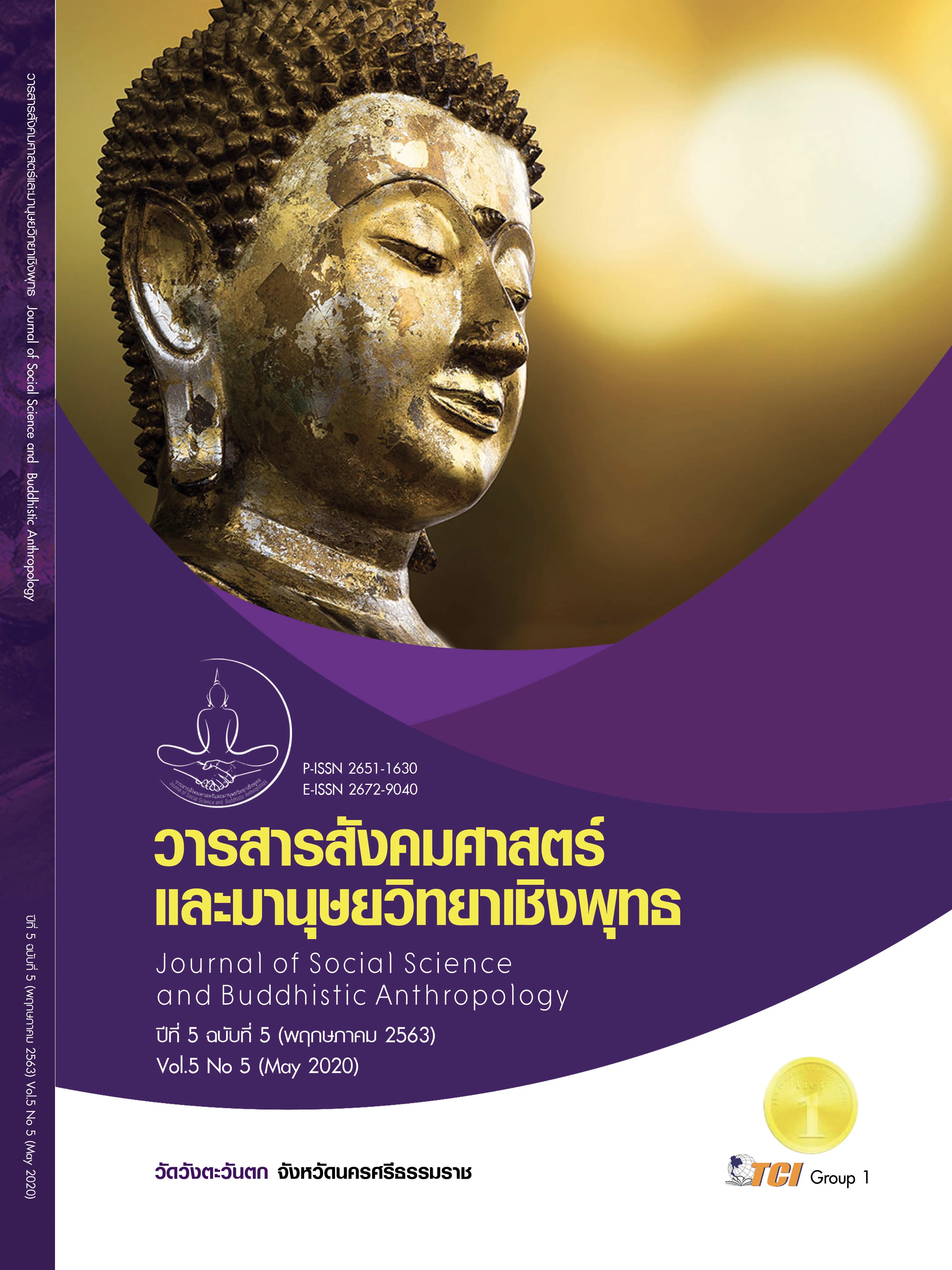THE ANALYSIS OF USING LINGUISTIC SIMILE IN SUTTANTAPITAKA
Keywords:
Simile, Linguistic, SuttantapitakaAbstract
The objectives of this article were: 1) to study using words in the linguistic simile in Suttantapitaka. 2) to malarial study of the process of the linguistic simile meaning in Suttantapitaka. and 3) to malarial study of selecting communication equipment in the linguistic simile in Suttantapitaka. The research methods are as follows: 1) Collecting relevant documents and research 2) Selecting data from sample groups 3) Analyzing data using linguistic strategies and this research is documentary research. The result of research findings were as follows: using of words in the simile in Suttantapitaka consisted of the dictionary definition was found in 9 types: “as” “like” “look like…as…so” “look like…as…so” “look like” “look like…so that” “…as…so” “…as…so” “as…so”. on analysis an connection process of the meaning of the simile in Suttantapitaka it was found in 10 types: character, interpretation of Dharma, condition process of thinking, ability, sample case, short story, action, question and answer, and qualification, that connect origin meaning to target meaning and comparison must have distinctive style ed. Selecting communication equipment in the simile in Suttantapitaka was found in 14 things: tack, mango, cymophane, craftsman, traveler, example, sample case, epitome, container, buckboard, cloth, water, sack, and remains. In this researching selecting communication equipment in the simile in Suttantapitaka has been made by refer to a state of society, lifestyle and person’ being in the era of the Lord Buddha and interpretation in the sociological context consists of selecting communication equipment.
References
ชุมสาย สุวรรณชมภู. (2540). ภาษากับการสื่อสาร. กรุงเทพมหานคร: มหาวิทยาลัยศิลปากร.
พระครูสุภาจารนิวิฐ. (2556). ศึกษาการใช้สื่อธรรมชาติในการเผยแผ่พระพุทธศาสนาเถรวาท. ใน วิทยานิพนธ์พุทธศาสตรมหาบัณฑิต สาขาวิชาพระพุทธศาสนา. มหาวิทยาลัยมหาจุฬาลงกรณราชวิทยาลัย.
พระธรรมปิฎก (ป.อ.ปยุตฺโต). (2543). พจนากรมพุทธศาสน์ ฉบับประมวลศัพท์. กรุงเทพมหานคร: โรงพิมพ์มหาจุฬาลงกรณราชวิทยาลัย.
พระพรหมคุณาภรณ์ (ป.อ. ปยุตฺโต). (2545). พุทธวิธีในการสอน. กรุงเทพมหานคร: มหาวิทยามหาจุฬาลงกรณราชวิทยาลัย.
พระมนัส ธมฺมรโต. (2554). ศึกษาวิธีสร้างแรงจูงใจจากพุทธวิธีการสอน. ใน วิทยานิพนธ์พุทธศาสตรมหาบัณฑิต สาขาวิชาพระพุทธศาสนา. มหาวิทยาลัยมหาจุฬาลงกรณราชวิทยาลัย.
พระมหาภราดร ภูริสฺสโร. (2558). ศึกษาอุปลักษณ์เชิงมโนทัศน์ในพระสุตตันตปิฎก. ใน วิทยานิพนธ์พุทธศาสตรมหาบัณฑิต สาขาวิชาภาษาศาสตร์. มหาวิทยาลัยมหาจุฬาลงกรณราชวิทยาลัย.
พระมหาสมภูมิ จิณฺณธมฺโม. (2556). ศึกษาอวัจนภาษาที่ใช้ในการสื่อสารของพระพุทธเจ้าในพรสุตตันตปิฎก. ใน วิทยานิพนธ์พุทธศาสตรมหาบัณฑิต สาขาวิชาภาษาศาสตร์. มหาวิทยาลัยมหาจุฬาลงกรณราชวิทยาลัย.
พระมหาอรรถพงษ์ อตฺถญาโณ. (2562). วิเคราะห์อุปลักษณ์เกี่ยวกับเบญจขันธ์ในพระสุตตันตปิฎก. ใน วิทยานิพนธ์พุทธศาสตรดุษฎีบัณฑิต สาขาวิชาภาษาศาสตร์. มหาวิทยาลัยมหาจุฬาลงกรณราชวิทยาลัย.
มหาจุฬาลงกรณราชวิทยาลัย. (2539). บทนำ พระวินัยปิฎก เล่ม 1. กรุงเทพมหานคร: โรงพิมพ์มหาจุฬาลงกรณราชวิทยาลัย.
มหาจุฬาลงกรณราชวิทยาลัย. (2548). หลักสูตรพุทธศาสตรบัณฑิต พ.ศ. 2542. กรุงเทพมหานคร: โรงพิมพ์มหาจุฬาลงกรณราชวิทยาลัย.
สิทธา พินิจภูวดล และคณะ. (2514). การเขียนและการพูด. กรุงเทพมหานคร: โรงพิมพ์มหาวิทยาลัยรามคำแหง.
Ogden, C. K. & Richards, I. A. . (1972). The Meaning of Meaning: A Study of The Influence of Language upon Thought and of The Science of Symbolism. London: Routledge & Kegan Paul LTD.








